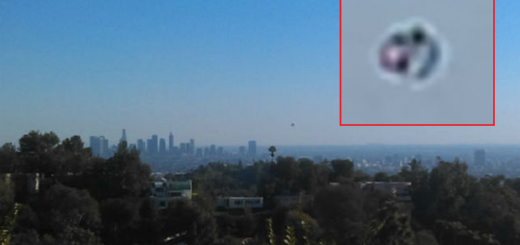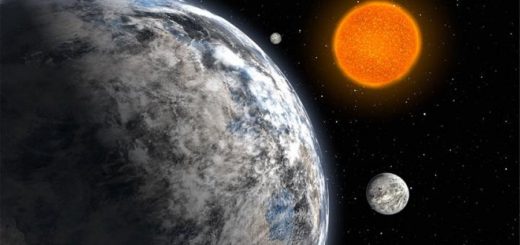30 images that will make you reconsider your entire existence

Most of the people on Earth are completely unaware of everything that’s around us. When you look at the night sky, you see the moon, vague reflection of some of our planets and countless stars that have captured the imagination of people who lived on Earth for tens of thousands of years.
Sometimes, we need to slow down the pace by which we live every single day and reconsider where we are as humans.
These 30 mind-bending images will make you REEVALUATE how you look at our planet, the solar system, and the universe in general.
Lets’s start of with the basics. This here is Earth. Did you know that our planet revolves around its own axis; it orbits the sun, the sun moves through space at a staggering 792,000 kilometers per hour? But there’s a bigger picture beyond Earth.
The moon has captured the imagination of countless civilizations on Earth. Here we have the scaled distance between our planet and its faithful celestial companion.
Hey, did you know? We could fit ALL the planets of our solar system between the Earth and Moon!
The Solar System is MASSIVE, and here are all the solar system’s planets, dwarf planets and moons.
The largest planet in our solar system is Jupiter. Its size is truly glorious and to get an idea as to how big the Gas Giant is, here’s an image that illustrates the size of Jupiter compared to North America.
Here’s a comparison of Earth and Jupiter.
Ever thought about how Earth would look like if it had rings around it like Saturn? Here’s what it would look like!
But planets, dwarf planets, and the moon aren’t the only thing in our solar system. There are asteroids and comets too. Here’s an image of a comet compared to L.A.
While that may look really big, the truth is that it’s miniature compared to some other objects in the universe. This image shows the sun and the planets in our solar system. Look how tiny Earth is, yet to us, it seems so big!
Let’s travel a bit through our solar system and see how our planet looks like from other places. Here’s a view from Mars!
Here’s another one from the surface of Mars.
This image is from one of the most powerful telescopes orbiting Mars: Earth and its moon, showing continent-size detail on the planet and the relative size of the moon.
This is how Earth looks like if you were around Saturn.
This is what Earth looks like from a distance of 4 BILLION MILES away, around Neptune.
Scientists think there are more stars in the universe than grains of sand on Earth!
Here’s a comparison of the Earth and the Sun
Even though the sun might seem MASSIVE, the truth is that it’s actually really small compared to other stars in the known universe. For example, VY Canis Majoris is approximately 1,000,000,000 times bigger than our Sun.
But even with all of the above images, it’s really hard to understand the size of everything that’s out there. This image offers a great perspective. If the sun was a blood cell, the Milky Way would be as big as the United States!
This image shows us where we are located inside the Milky way!
Here’s a different view.
Did you know? When you look up at the sky at night, the stars you see belong to this yellow circle!
Here’s another image which shows the milky way and what some of our most advanced telescopes are able to see.
But the Milky Way Galaxy—our galactic address—is really small compared to other galaxies. There are objects in the universe which are SOOO big, it’s hard to even imagine it. In this image we see the size of the Milky Way Galaxy compared to some of the known galaxies in the universe, located millions of light years away from Earth.
Here’s another perspective.
Talking about size, here’s a view of a black hole called NGC 1277, and Earth’s and Neptune’s orbits.
The universe is so big, its hard to understand it. Here, you can check out a 46 billion-pixel Milky Way picture, which is considered the largest astronomical image to date. This image only shows a small part of it.
Our Solar System is part of a group of different star systems. This image illustrates it perfectly.
Just as our solar system is part of a group of different star systems, our galaxy is part of a group of galaxies, the local GALACTIC GROUP!
If we zoom out of the Local Galactic group we will see Laniakea. The Laniakea Supercluster is the galaxy supercluster that is home to the Milky Way and 100,000 other nearby galaxies. The Laniakea Supercluster encompasses 100,000 galaxies stretched out over 160 megaparsecs (520 million light-years).



 Creators of mankind
Creators of mankind Description of “Tall white aliens”
Description of “Tall white aliens” Where they came from?
Where they came from? About hostile civilizations
About hostile civilizations The war for the Earth
The war for the Earth “Tall white aliens” about eternal life
“Tall white aliens” about eternal life Video: “Nordic aliens”
Video: “Nordic aliens” Aliens
Aliens Alien encounters
Alien encounters The aliens base
The aliens base UFO
UFO Technology UFO
Technology UFO Underground civilization
Underground civilization Ancient alien artifacts
Ancient alien artifacts Military and UFO
Military and UFO Mysteries and hypotheses
Mysteries and hypotheses Scientific facts
Scientific facts


















